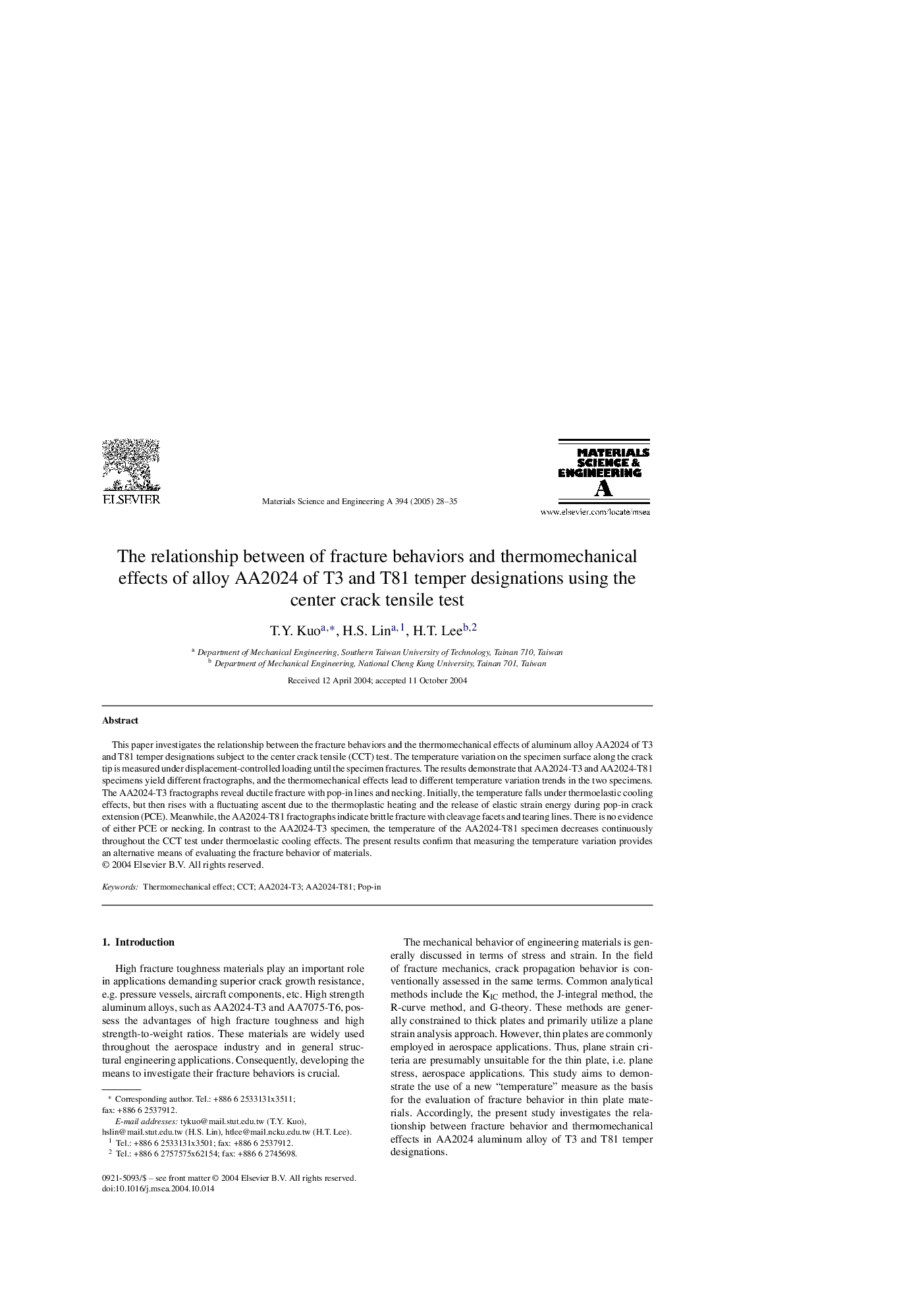| Article ID | Journal | Published Year | Pages | File Type |
|---|---|---|---|---|
| 9796425 | Materials Science and Engineering: A | 2005 | 8 Pages |
Abstract
This paper investigates the relationship between the fracture behaviors and the thermomechanical effects of aluminum alloy AA2024 of T3 and T81 temper designations subject to the center crack tensile (CCT) test. The temperature variation on the specimen surface along the crack tip is measured under displacement-controlled loading until the specimen fractures. The results demonstrate that AA2024-T3 and AA2024-T81 specimens yield different fractographs, and the thermomechanical effects lead to different temperature variation trends in the two specimens. The AA2024-T3 fractographs reveal ductile fracture with pop-in lines and necking. Initially, the temperature falls under thermoelastic cooling effects, but then rises with a fluctuating ascent due to the thermoplastic heating and the release of elastic strain energy during pop-in crack extension (PCE). Meanwhile, the AA2024-T81 fractographs indicate brittle fracture with cleavage facets and tearing lines. There is no evidence of either PCE or necking. In contrast to the AA2024-T3 specimen, the temperature of the AA2024-T81 specimen decreases continuously throughout the CCT test under thermoelastic cooling effects. The present results confirm that measuring the temperature variation provides an alternative means of evaluating the fracture behavior of materials.
Related Topics
Physical Sciences and Engineering
Materials Science
Materials Science (General)
Authors
T.Y. Kuo, H.S. Lin, H.T. Lee,
